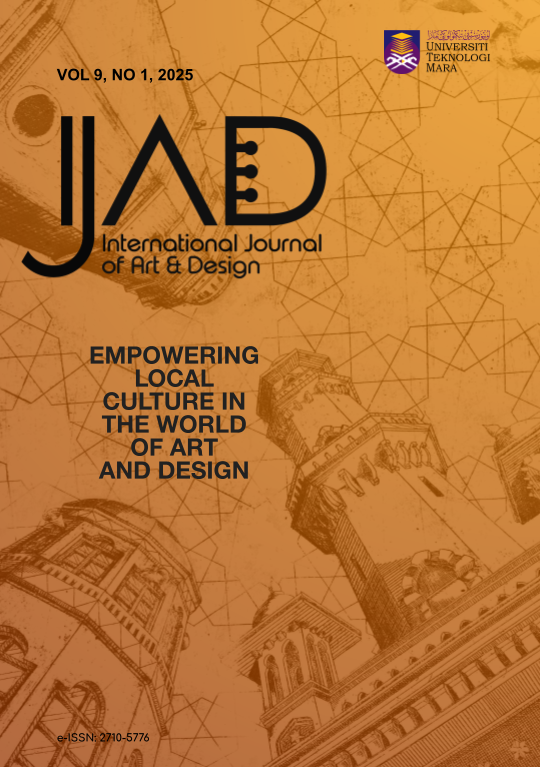A Study of Rehal Forms in the National Museum Collection
DOI:
https://doi.org/10.24191/ijad.v9i1.3029Keywords:
Rehal, Form, Wood Carving, Meaning, InfluenceAbstract
The concept of using Rehals goes beyond its use which includes emotions, spiritual and physical journeys, and youth. In most cultures, Rehals are used as a support for religious texts while studying or praying. In addition, Rehals symbolize the importance of knowledge and spiritual growth in life. In the tradition of the Islamic community, Rehals are not just a tool to place the Qur'an but also as a symbol of respect for the Qur'an in the pursuit of wisdom and knowledge. Rehals are found in mosques and houses that place values and spiritual education in the Islamic society. However, most Rehals have been modified according to the passage of time. The objective of the study is to identify the form of Rehals. An in-depth study of Rehals is not commonly done, especially about the materials and shapes. Samples of Rehals were collected from the National Museum of Kuala Lumpur. This research aims to identify the form of Rehals in the year 1957 until 2020. As a result of this study, the findings were obtained from interviews and the researcher's observations. The findings of this study are expected to help researchers and various parties to explore the form of Rehals from the point of view of size, height, manufacturing materials and types of carving.
Downloads
Published
Issue
Section
License
Copyright (c) 2025 International Journal of Art and Design

This work is licensed under a Creative Commons Attribution-NonCommercial-NoDerivatives 4.0 International License.






